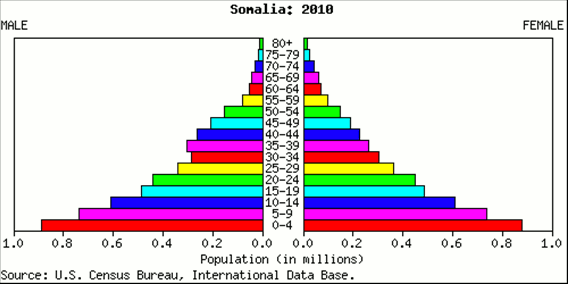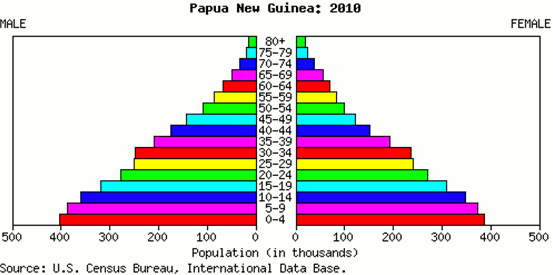Initial cuts to the Australian baby bonus scheme are welcome but do not go far enough. The Stable Population Party believes that women should have freedom to choose how many children they want and how they want to space those children for the benefit of the family, without government bribing them to have a child.
A policy on choice should serve as a basis for Australian foreign aid, since establishment of a stable population is the fastest and most efficient way to improve the wellbeing of aid recipients. Flat demographic profiles and rapid population growth, seen in Papua New Guinea (PNG) and Timor Lestéare worrying signs of emerging failed states on Australia’s borders. These dangerous demographic trends point to social instability over the coming decade and act as a cautionary note to investors and policy makers.
The good news is that the perilous positions of PNG and Timor can be managed over a five to ten year period if the right policies are rapidly advanced. Failure to move will increase the risk of failed states emerging on Australia’s doorstep with consequent negative impacts on regional investment and security.
Advertisement
 A study of the demographic profiles of countries in the world’s trouble spots from Egypt, Libya, Syria, and Yemen shows one of the main reasons why these countries have become unstable is that they suffer from rising unemployment and poverty. As population expands they can no longer feed themselves.
A study of the demographic profiles of countries in the world’s trouble spots from Egypt, Libya, Syria, and Yemen shows one of the main reasons why these countries have become unstable is that they suffer from rising unemployment and poverty. As population expands they can no longer feed themselves.
Intergenerational resentment soon sets in and there follows an age-based class struggle by the young and poor against the old and rich in these nations.Most people don’t care too much about politics while their bellies are full. They ignore corrupt and often brutal leaders so long as the politics doesn’t impinge on their daily lives. Add to this unstable mix a flat population pyramid, a rapidly growing population and increased competition for food, water, and a job, and you soon see what has transpired in the Arab Spring.
 It is disturbing to compare this type of demographic profile to that of Australia’s near northern neighbours of PNG and Timor Lesté, where a fertility rate of seven was recorded in 2002.
It is disturbing to compare this type of demographic profile to that of Australia’s near northern neighbours of PNG and Timor Lesté, where a fertility rate of seven was recorded in 2002.
In 1989, Iranian President Rafsanjani oversaw a rapid change in population policy. Realising that the costs of a burgeoning population would far exceed its capacity to provide adequate food, education, housing and employment, Iran's Health Ministry launched a nationwide campaign offering family planning assistance. Iran’s parliament also withdrew food coupons, paid maternity leave, and social welfare subsidies after a third child, and birth control classes were required before any couple could get married. These policy initiatives led to a rapid decline in fertility rates from an average of over six children per woman to below two in the space of just ten years and Iran's population growth rate dropped from an all-time high of 3.2 per cent in 1986 to just 1.2 per cent.
A resulting, inverse or top shaped Iranian demographic profile, with fewer people in each subsequent five year cohort since 1985, shows what can be achieved when women have a choice in the matter of their fertility and have access to family planning knowledge and technology.
While the political situation in Australia’s neighbours is likely to remain volatile over the coming decade, unless action is taken now to reduce fertility rates, those countries will become failed states before the end of this decade and the costs to Australia in terms of lost trade and investment, security costs, and immigration control, will be much more than if we act today. Australia’s foreign aid needs to be heavily weighted towards following Iran’s example from the 1990’s both in Australia and in the Pacific region. In this way, fertility rates can be reduced below two by 2023.
Discuss in our Forums
See what other readers are saying about this article!
Click here to read & post comments.
193 posts so far.